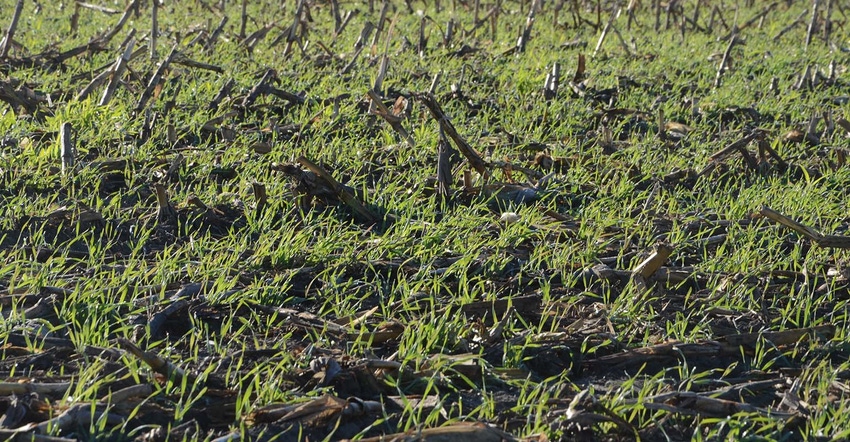March 13, 2019

A USDA report, “Agricultural Conservation on Working Lands: Trends from 2004 to Present,” focuses on working-lands conservation practices that reduce greenhouse gas emissions or increase carbon sequestration.
Practices include:
Reduced tillage
Nitrogen management
Use of cover crops
Use of precision agriculture technologies, and
Use of anaerobic digesters for manure.
Tillage
The proportion of acres grown using no tillage showed the great increase for wheat, increased slightly for corn and decreased slightly for soybeans. The proportion of acres grown using some type of reduced tillage was relatively constant for corn for 2005 to 2016, decreased for soybeans and increased for wheat. From 2003 to 2006, 93% of crops were grown using some type of reduced tillage.
Nitrogen
Nitrogen applied per bushel decreased slightly for corn from 2005 to 2016, for soy from 2006 to 2012 and for wheat for 2004 to 2009.
Enhanced efficiency fertilizers are another way to increase the nitrogen-use efficiency of crops. From 2005 to 2010, use of enhanced efficiency fertilizers on corn increased from 8.5% to 12.5%.
Cover crops
Adoption of cover crops increased from 2010 to 2015, though cover crop adoption is relatively low, overall. Nationally, 7.7 million acres of cover crops were planted in 2010, increasing to 16.3 million acres in 2015. The Corn Belt had the largest increase in acres of cover crops planted from 2010 to 2015, while the Northeast had the highest ratio of adoption.
Precision agriculture
Adoption of precision-agriculture techniques, including variable-rate technology and GPS guidance systems increased substantially over the period studied.
For corn grown in the Corn Belt, adoption of VRT increased from 6% in 2005 to 35% in 2016. Larger farms were more likely to adopt VRT. VRT adoption on corn increased in all regions.
GPS-guided auto steer systems usage increased in all regions except for the Southeast. Adoption rates of auto steer for corn increased from 13% in 2005 in the Corn Belt to 56% in 2016.
Digester systems
Anaerobic digester systems can reduce methane emissions by capturing the gases and using them to generate electricity and/or heat and converting them to carbon dioxide. The number of operating digesters increased from 63 in 2004 to 248 in 2017.
Complete mix (35%) and plug flow digesters (42%) were the two most common types of anaerobic digesters built between 2004 and 2017. Most new digesters were fed by dairy cow manure (196 out of 248).
This report helps establish a baseline adoption of select conservation practices and technologies. Ideally, this effort would be repeated every two years to incorporate new data and to add new practices. Large data gaps remain in data for grazing lands and manure management.
Source: USDA, which is solely responsible for the information provided and is wholly owned by the source. Informa Business Media and all its subsidiaries are not responsible for any of the content contained in this information asset
You May Also Like




